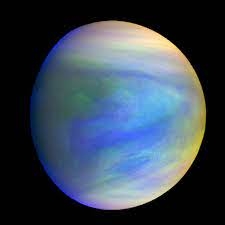
Venus, Earth‘s planetary neighbour, is our home planet‘s closest analogue in terms of mass, radius, and density in the solar system. It is, however, distinctive in its own right. While the lack of life is obvious, it is also popular due to its retrograde rotation.
243 earth days
It is well-documented that Venus has the longest day in the solar system. While it is known that Venus takes 243 Earth days to complete one rotation, scientists have been able to calculate the duration of Venusian day recently with more precision. The result? The average day on Venus based on this study is 243.0226 Earth days, give or take 0.0013 Earth days.
In order to make the measurement, researchers attempted to observe Venus on 121 instances from 2006-2020, and were successful on 21 occasions. On these 21 instances, scientists transmitted radio waves towards Venus from NASA’s Goldstone Antenna in the Mojave Desert of California, and the echo received was studied.
“A giant disco ball”
In the words of University of California, Los Angeles (UCLA) planetary astronomer professor Jean-Luc Margot, who led the study that was published in the journal Nature Astronomy in April, “each individual measurement was obtained by treating Venus as a giant disco ball”.
Based on this data, the length of the day of Venus – whose year is shorter as it completes an orbit around the sun into 25 Earth days – was calculated with greater accuracy. It was also used to measure Venus’ spin axis rotation, spin precession rate, and moment of inertia. All this, using Earth-based observations of our neighbouring planet.
Picture Credit : Google




